AI search is still moving. What’s cited today across Google (AI Mode + AI Overviews) and ChatGPT might look different in a month.
But there’s no need to scramble.
For example, a dip in Reddit citations isn’t a reason to abandon conversational marketing or rebuild your plan from scratch.
(Plus, it’s likely things aren’t always what they seem, like this speculation from John-Henry Scherck about Reddit and ChatGPT.)
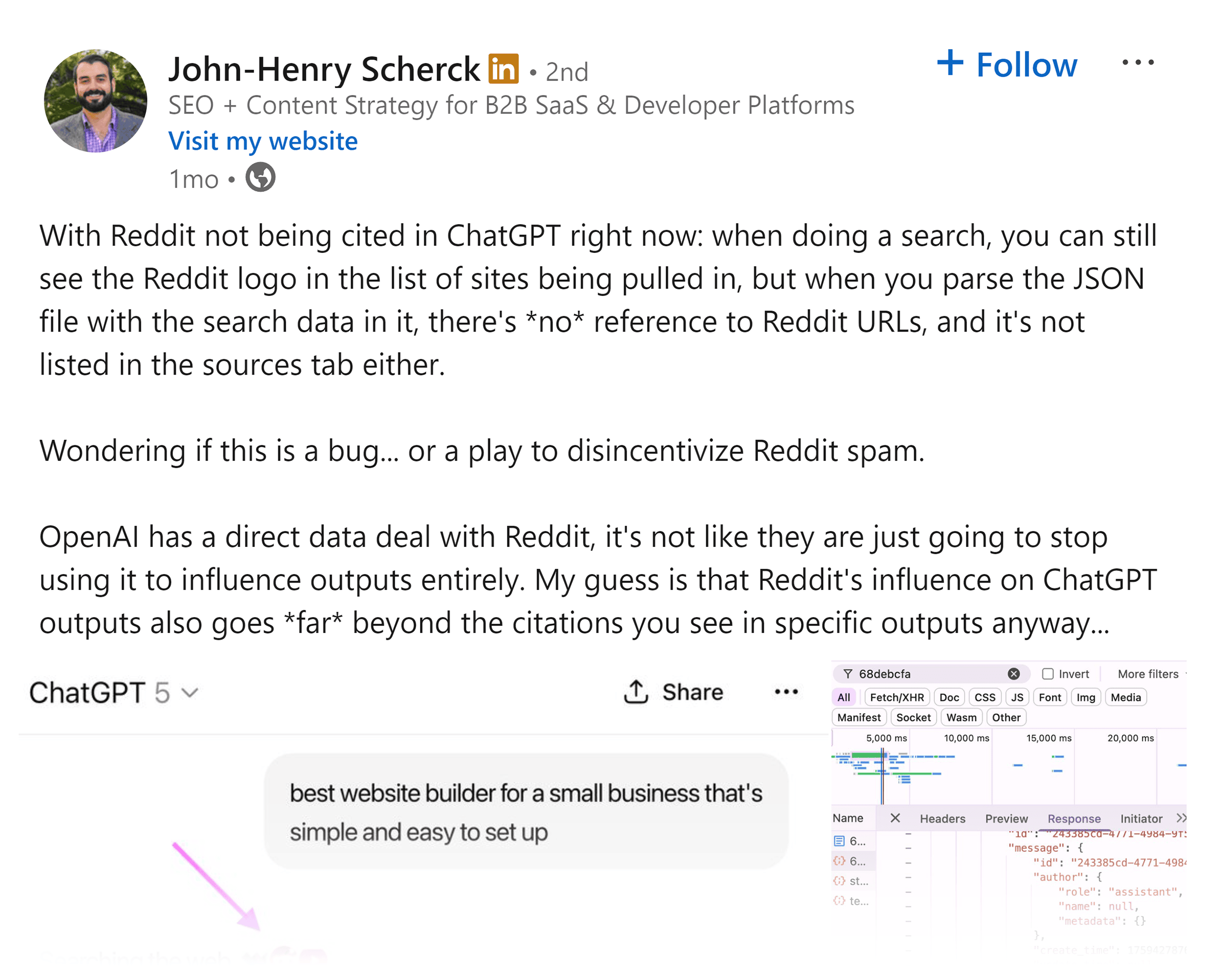
Instead, stick to doing the basics — getting mentioned by the major players in your industry as well as hyper-relevant/niche ones — while keeping tabs on macro changes that should impact your go-forward strategy.
LLM Sources Aren’t Set in Stone
The “who gets cited” list keeps changing, especially in ChatGPT.
Just comparing August 2025 to October 2025, ChatGPT increased the number of sources it uses by ~80%, signaling a push toward more diverse evidence in each answer.
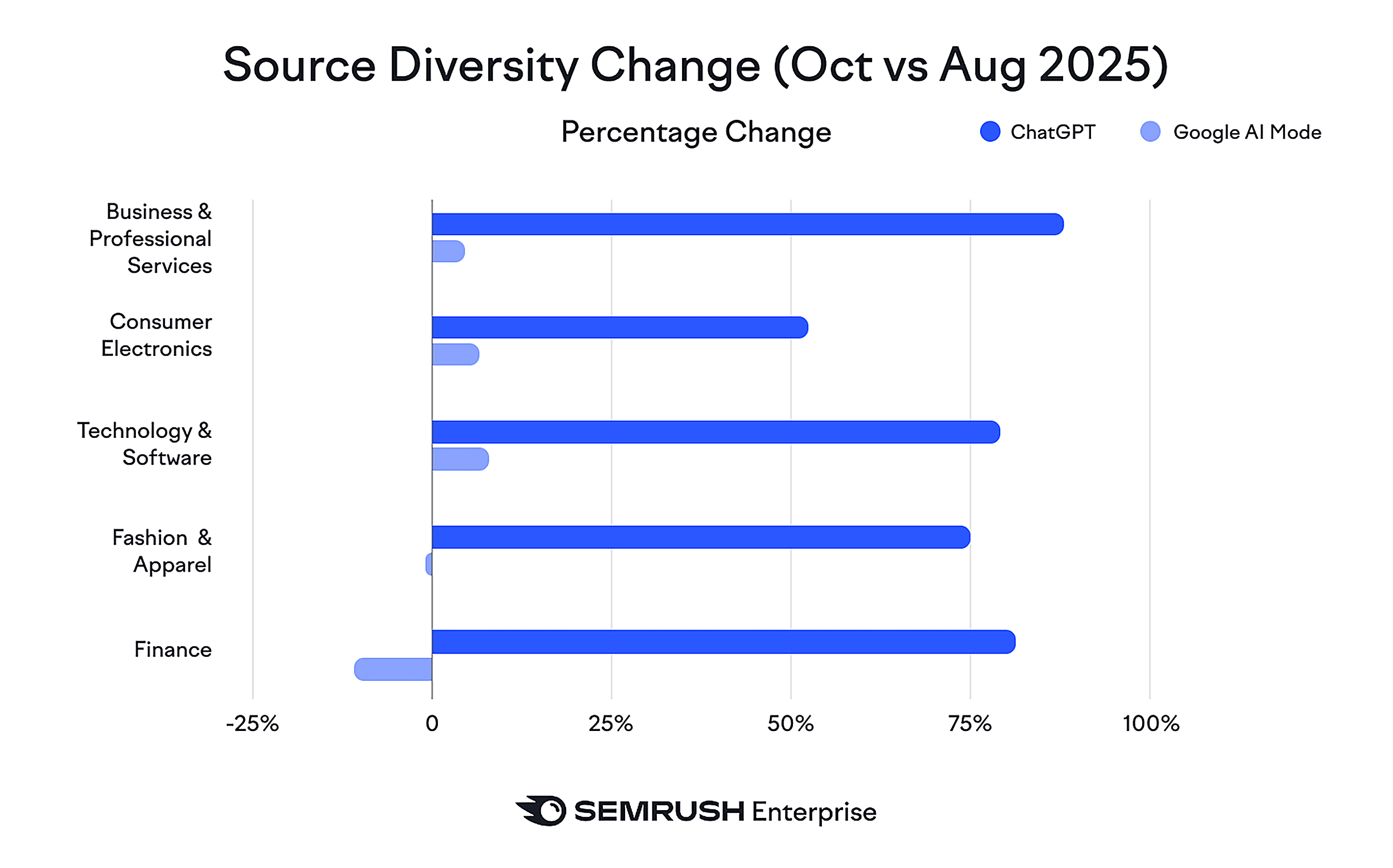
This is a dramatic shift in just a couple of months.
But if you’re an SEO, semi-regular algorithm shifts should sound very familiar.
Over the years, Google has made thousands upon thousands of changes to how it finds and ranks pages.
AI will be no different. LLMs will want to continuously improve its output and user experience.
In SEO, we say to stick to the basics in light of algorithm updates, so there’s no need to treat AI SEO differently.
Explore a deeper analysis and get actionable strategies on how to win in AI search: Get the full Semrush AI Visibility Index.
What This Means for Marketers
When sources are in flux, you win by doubling down on durable authority and adding a light, recurring layer of measurement to stay apprised of changes.
The goal should be to keep your foundation strong. Google’s own guidance for AI features emphasizes usefulness, experience, clear structure, and trust signals.
Those are the same qualities humans respond to and the same signals LLMs can verify.
But, while working on the fundamentals, it’s good to keep an eye on LLM trends.
Below we’ll share four tips that will help you sustainably optimize for LLM answers and citations while simultaneously tracking significant, noteworthy shifts in LLM behavior.
Tip #1: Check ChatGPT Sources Monthly for Target Prompts
As we’ve seen, ChatGPT’s citations change. Sometimes quickly.
Rather than seeing this as a race, consider it an opportunity.
Every time an LLM adds new sources into the mix, they’re providing new ideas for where you can earn media and build brand visibility and authority.
And you don’t need a complex dashboard to track the changes. You just need a simple spreadsheet that shows which domains it’s using for your money prompts.
Start by choosing prompts that map to your funnel.
For example:
- “What is ___?”
- “Best ___ for ”
- “ vs ___”
- “How to set up ___”
- “Pricing for ___”
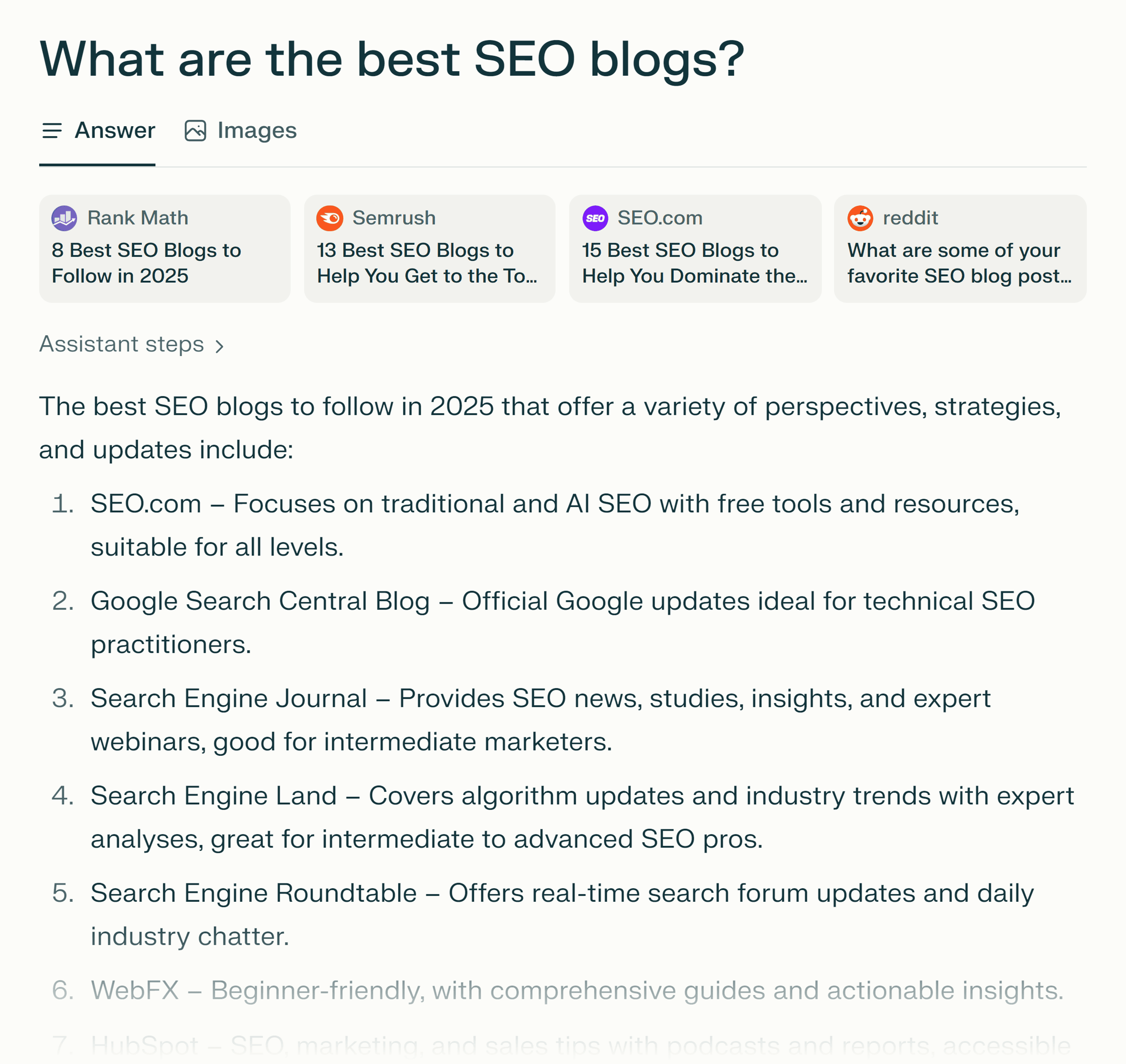
Run them in an LLM the same way a buyer would. Note the sources. Track in a shared living document month over month.
You’re looking for two things: new entrants and rising domains. Both provide ideas on where to place your best evidence next.
So, what does this look like in practice?
Create a one-page tracker and update it every 30 days:
- Prompts: 25-100 that reflect real buyer questions
- Sources: Every domain cited, in order of appearance
- Changes: New, up, down, gone
- Action: One line per change (“Pitch reviewer X,” “Add methodology to pricing guide,” “Publish teardown with benchmarks”)
Again, the goal is to identify broader trends and not worry about every little change.
After a few months of this type of tracking, you may notice similarities in the types of sites or content being prioritized. Those are the ones worth adding to your strategy.
Tip #2: Still Perform Backlink Competitive Analyses to Identify Where Else Competitors Are Being Cited
LLMs lean on trusted third-party sites. Some of those sites already vouch for your competitors.
Backlinks show where that trust lives.
Use traditional backlink gap analyses to find new ideas as to where you can earn external authority signals. You can also gain insight about the type of content that’s worth citing.
Start simple. Pick 5–10 competitors and pull their new referring domains from the last 3-6 months.
For example, using Semrush’s Backlink Gap tool, we compared Backlinko’s backlinks to leading SEO tools and noticed they have links from VistaPrint while Backlinko doesn’t.
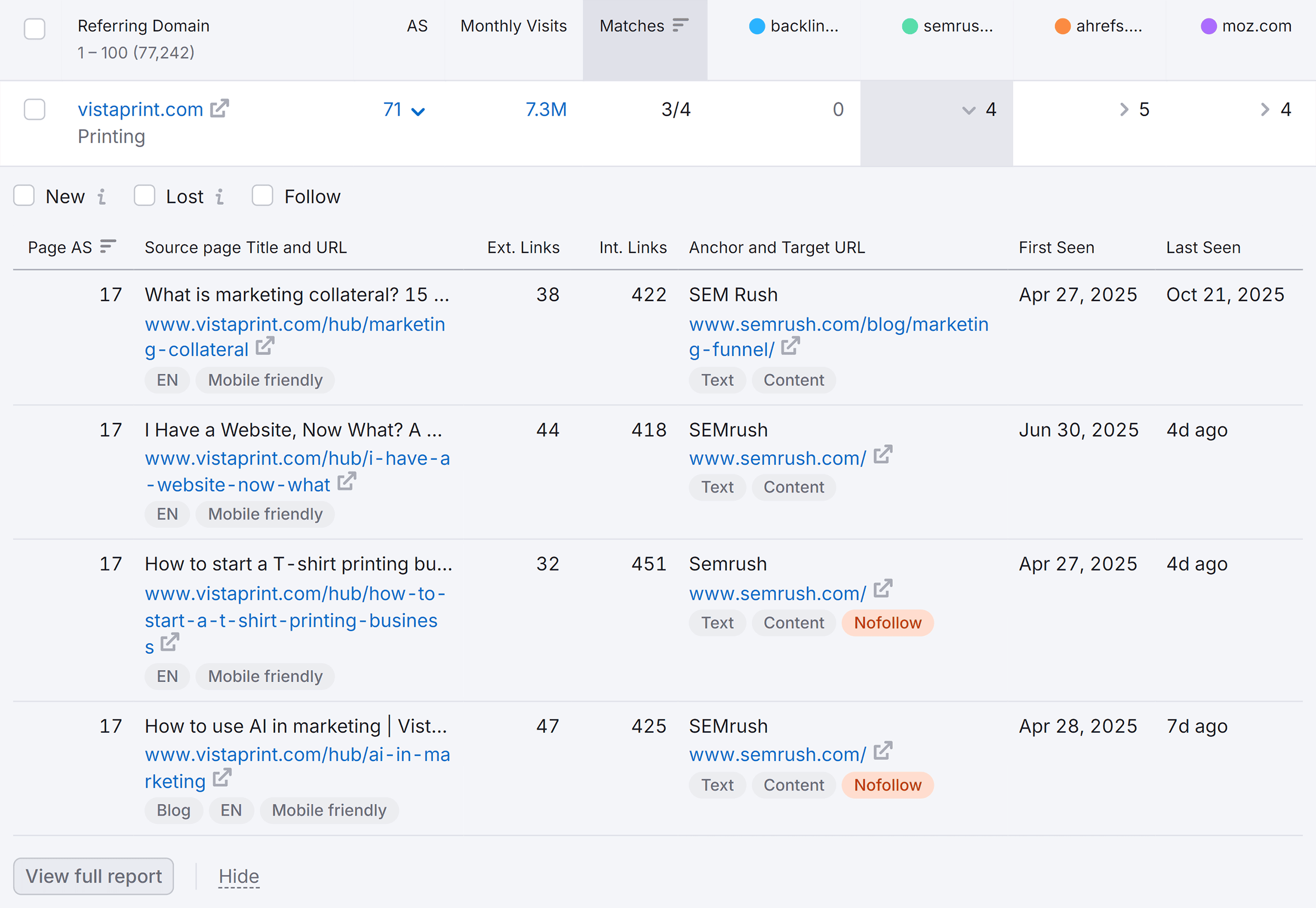
So we checked out the content and the page they linked to, which in this example turned out to be an informational blog post about the marketing funnel.

When we put this URL into Semrush’s Backlink Analytics tool, we found that this specific page has 344 referring domains pointing to it.
Many of the linking pages are informational about marketing and are relying on Semrush’s expertise to support their own articles.
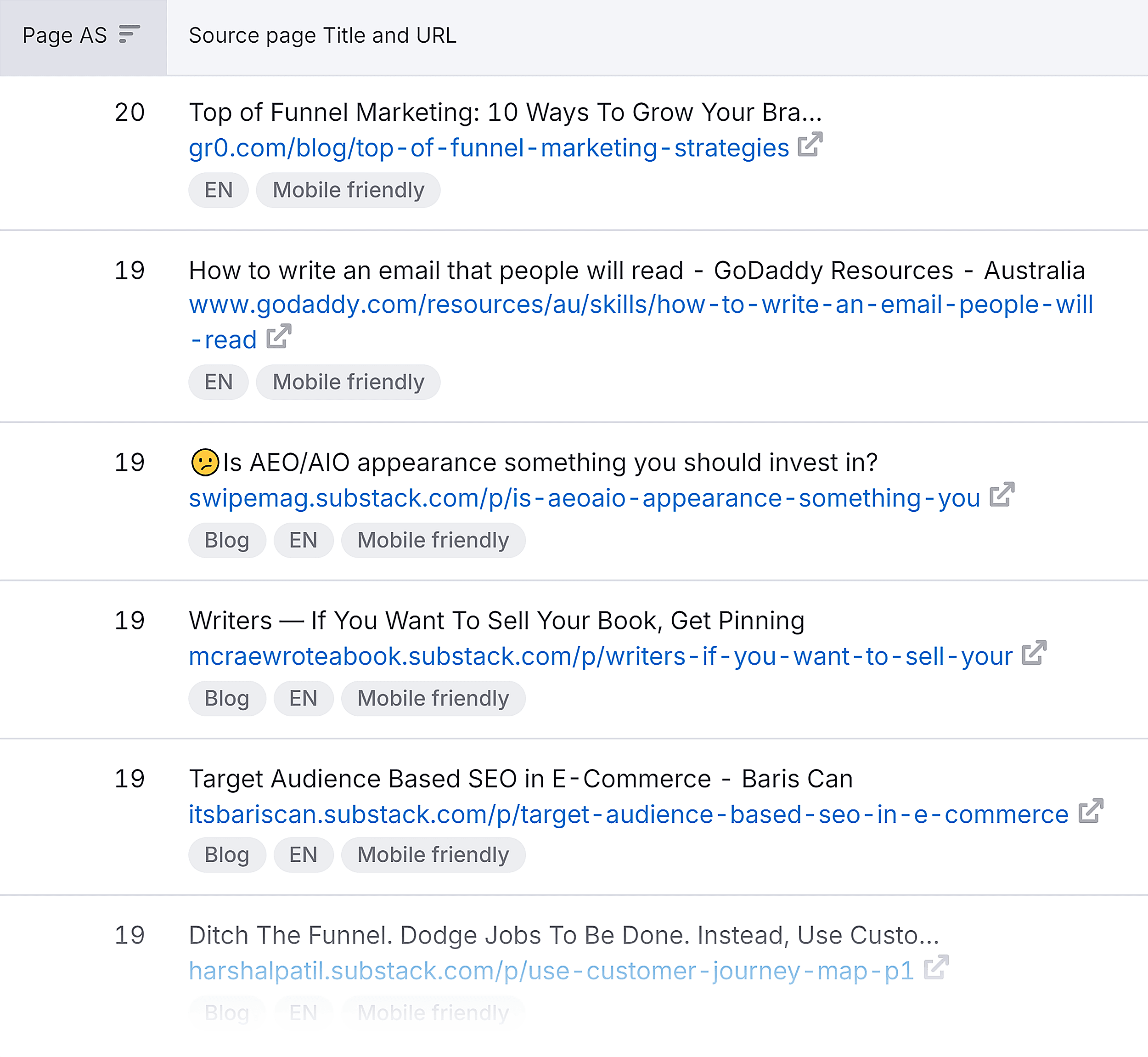
This indicates the piece of content is strong and worth evaluating for insight into what makes it high quality.
As it turns out, the page is very robust with a lot of visual appeal. It’s full of useful graphics, screenshots, and actionable takeaways that make what can be a convoluted topic into something straightforward.

In this example, we’ve learned some sites that talk about marketing fundamentals and may be worth targeting (VistaPrint, GoDaddy, etc.), and we’ve gained inspiration as to what makes that content appealing to link to.
When doing this kind of analysis yourself, look for patterns:
- Formats that win links: Research studies, graphics, benchmarks, calculators, templates, product docs, API guides, teardown posts, expert Q&As.
- Topics that attract citations: “How it works,” “costs and trade-offs,” “setup steps,” “common mistakes,” “comparison X vs Y.”
Pro tip: Mid-tier niche outlets often outperform top-tier media for earning durable, evergreen citations. They publish faster, go deeper, and link more generously when you bring real substance.
Tip #3: Refresh Audience Research to Learn Which Publications, Sites, and Podcasts Your Buyers Trust
Models evolve. People move faster.
If your buyers shifted from big media to niche reviewers or podcasts, your distribution plan has to follow.
Ask recent customers one question: “What did you read, watch, or listen to before choosing a tool like ours?”
Keep it lightweight. Add it to onboarding and to quarterly interviews. Log their responses and share with the PR and content teams to plan how to achieve earned media in those locations.
There’s online research you can do, too.
SparkToro, for example, reveals where your audience consumes content, giving you a great head-start on putting a pitch list together.
For example, with the free account (which gives you five searches per month), we wanted to explore where else folks who visit Backlinko.com get their information.
SparkToro then provides a list of websites, social networks, AI tools, YouTube channels, podcasts, and more that your audience tends to visit.
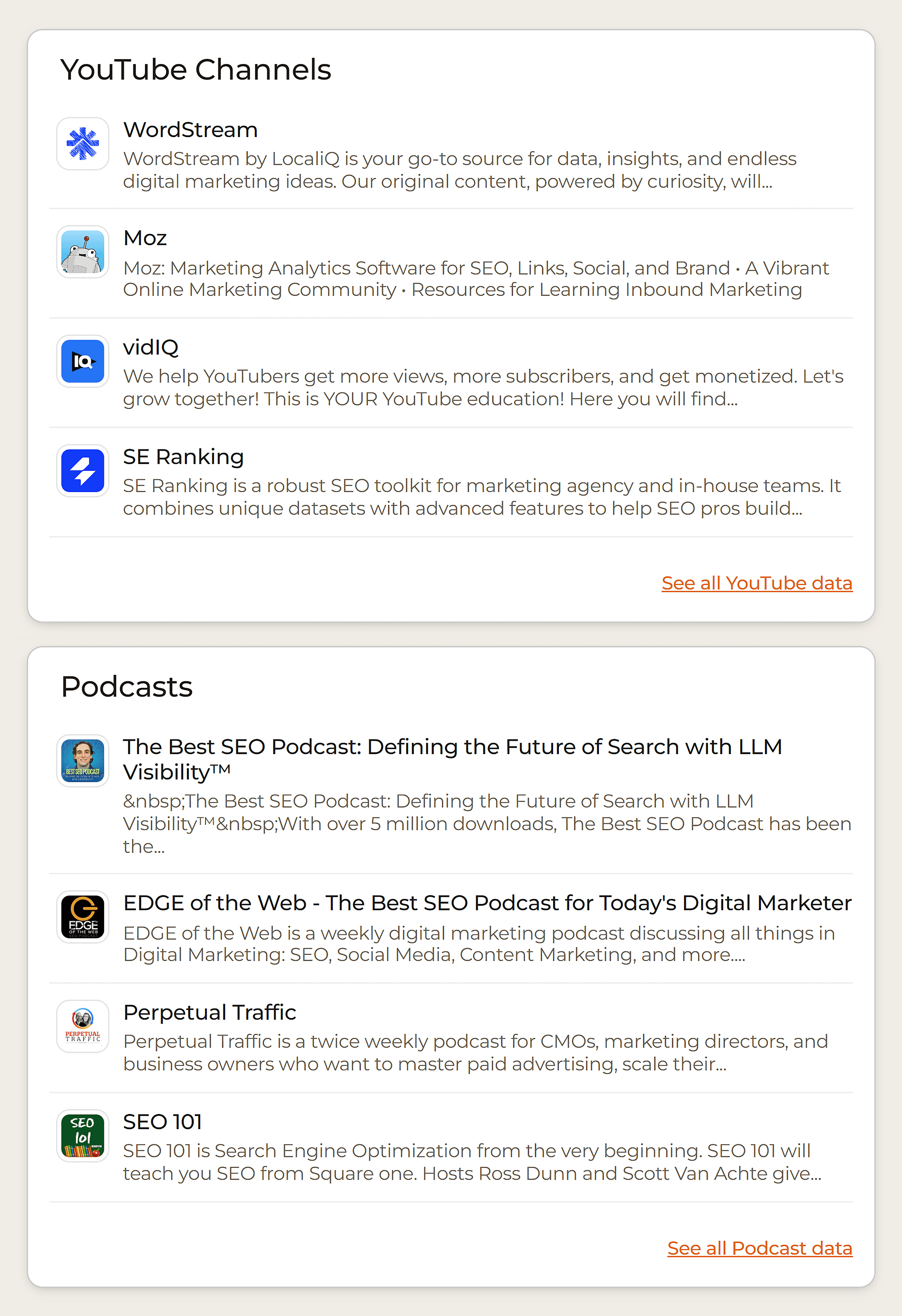
No matter your preferred method for audience research, if the last time it was updated was over six months ago, it’s time for a refresh.
Further reading: Audience Research: Stop Guessing What Your Buyers Care About
Tip #4: Continue Focusing on Providing Net-New Value Via Content
You know what’s always necessary for building third-party authority signals on a regular basis?
Content. Search engines, LLMs, social sites, YouTube, etc. all need content to surface.
But “better” content isn’t enough. You need something new to compete. Data no one else has. Tests no one else ran. Explanations that resolve the question completely.
This kind of content gives LLM models something concrete to ground on and editors something worth linking to.
What does this look like in practice?
Try shipping one high-value asset per month:
- Original data with a simple method and limits
- Comparative testing with screenshots, timings, and results
- Expert explainers with named practitioners and sources
- Product docs or setup guides that others reference to get the job done
Comprehensive guides can still perform, too. Take an example from our own site, Google RankBrain: The Definitive Guide, which is often a primary source for LLMs on relevant queries.
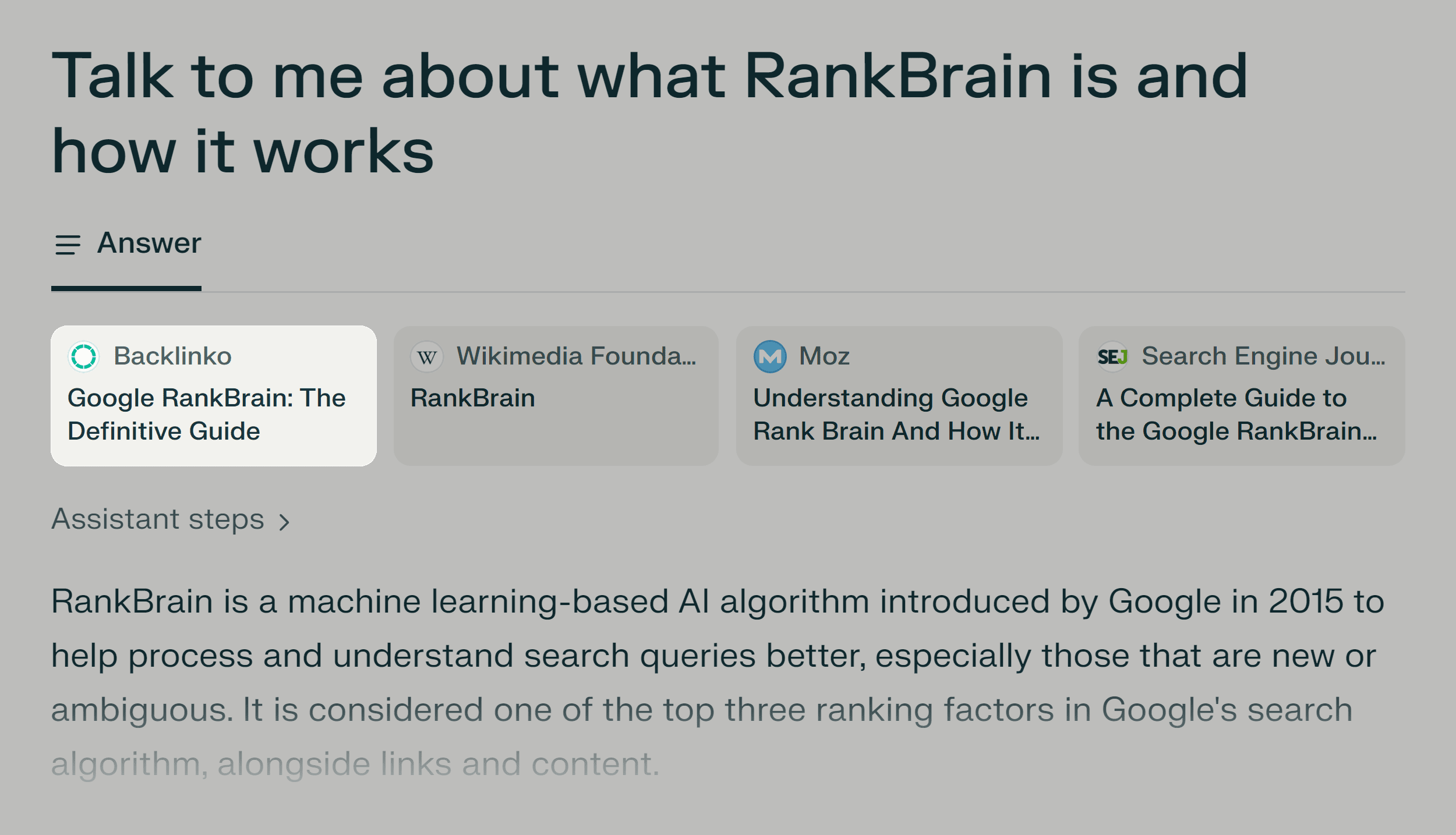
When you create something better than anything else out there, that’s when it becomes a primary reference. It can even get mentioned on the MIT site in an article about the shift to generative AI.
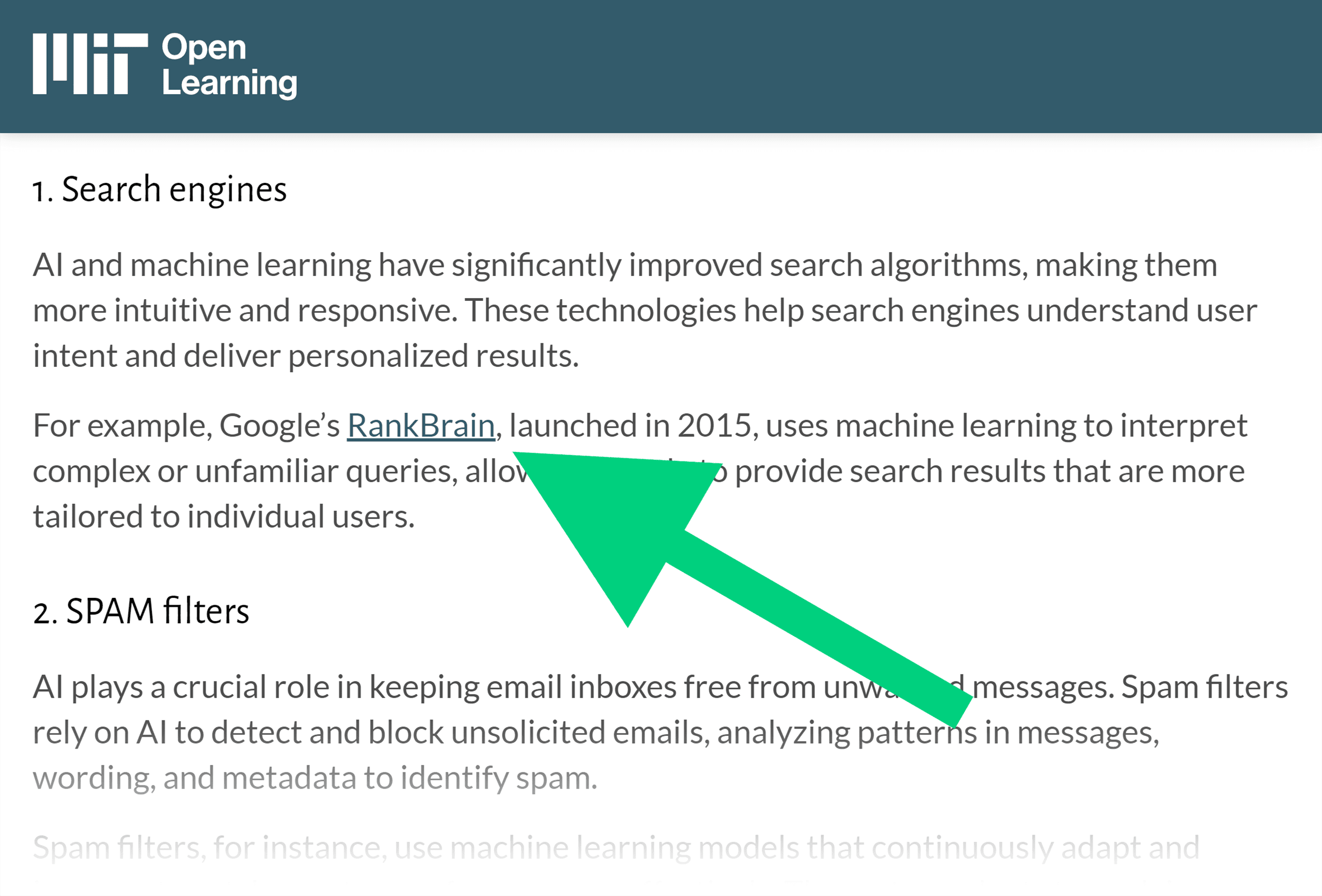
Ultimately, if you’re providing the best answer that satisfies a curiosity, you’re building a solid foundation for driving authority signals.
Once you create the content, close the loop. Pitch those assets to the outlets from Tips 2 and 3.
If they’re published on a third-party site, implement your typical distribution process to get as much traction as possible.
Then track if they start showing up in your monthly ChatGPT check.
Aim Where Trust Already Lives (And Models Look)
AI search will keep shifting. Your fundamentals shouldn’t.
Stay focused on building durable authority. Track what matters, earn trust where your audience already looks, and create work worth citing. You’ll stay adaptable no matter what comes next.
Tracking your LLM visibility can be tedious, especially as it’s a relatively new addition to your monthly reporting.
For high-level directional data about your industry as a first pass, bookmark and download Semrush’s AI Visibility Index. It’s updated monthly, saving you that first layer of research.
Backlinko is owned by Semrush. We’re still obsessed with bringing you world-class SEO insights, backed by hands-on experience. Unless otherwise noted, this content was written by either an employee or paid contractor of Semrush Inc.


